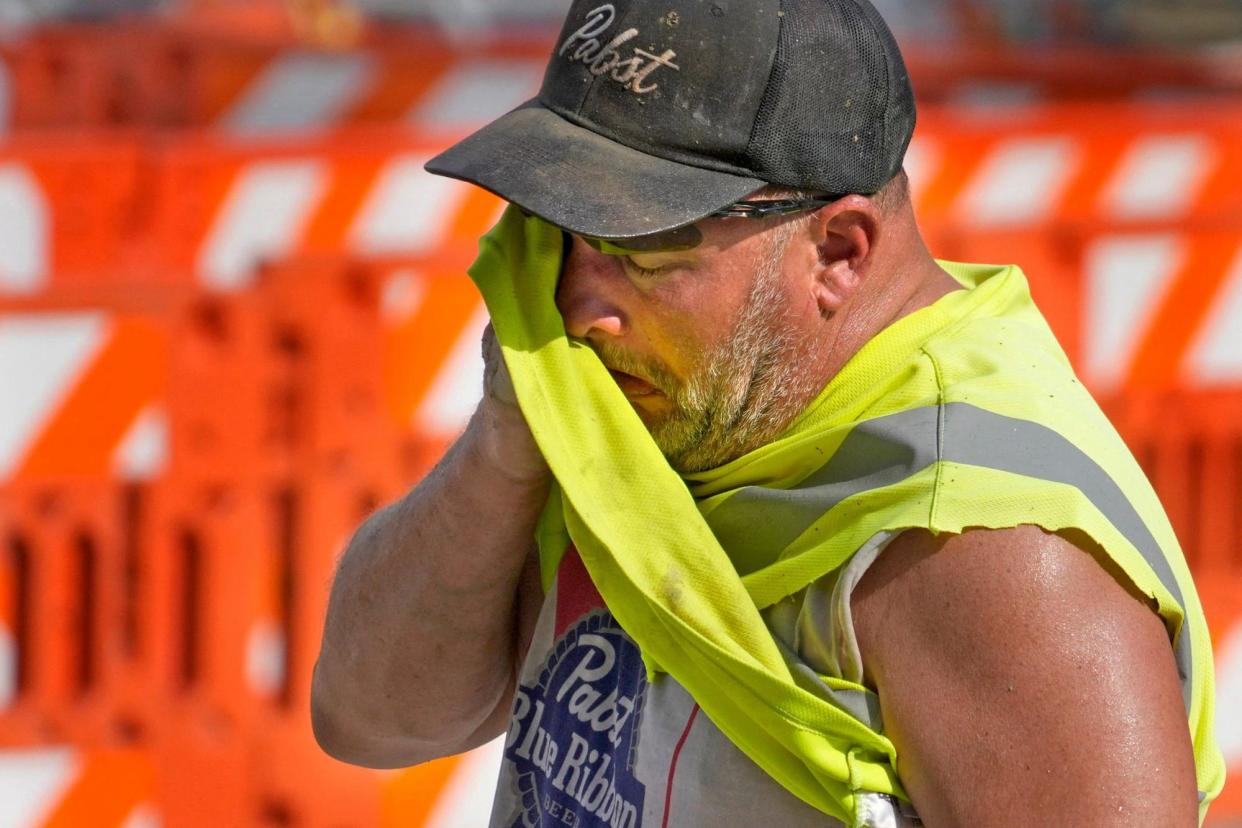Heatwaves and wildfires strike across US as tropical storm forms in gulf

Potential Tropical Cyclone One – a slow churning system of low atmospheric pressure in the Gulf of Mexico – was badgering the Texas coast but had not fully developed, meteorologists said on Wednesday.
The storm, which will be named Tropical Storm Alberto when it forms fully, is set to unleash powerful winds, heavy rain and flood threats across the entire southern US, Mexico and Central America. Storm-force winds, which stretch more than 400 miles (640km) from the storm’s center, are already affecting southern Texas.
As much of the US experiences anomalous weather – intense heat in the north-east and northern midwest, epic rains in Miami, fires in New Mexico and California, a winter storm warning in Montana – the tropical system in the gulf is forecast to bring intense downpours to southern Louisiana and the central and southern areas of Texas.
The National Weather Service warned in an update on Wednesday morning that the gulf system is becoming better defined, the storm activity “remains rather meager” and the atmospheric disturbance “still does not meet the requirements of a tropical cyclone”.
Related: What is a heat dome and how is it contributing to the heatwave in the US
Bill Nye, the respected “science guy”, told CNN that the events meant that “we need to contain our use of fossil fuels, putting carbon dioxide and methane in the atmosphere, and we need to do it as soon as we can”.
Nye said there had not been a Pearl Harbor-level climate change event “because it’s happening in slow motion … New research indicates there is not a tipping point or point of no return – it’s just things getting worse and worse.”
The continental heatwave is expected to intensify in the north-east on Wednesday, bringing 95F (35C) heat to Detroit and 92F (33C) temperatures to Buffalo, where the average for this time of year is 75F (24C). Philadelphia is expected to stay above 90F for the next week. Pittsburgh hit 94F on Tuesday.
The National Weather Service issued its first-ever excessive heat warning for Caribou, Maine, alerting to “dangerously hot conditions with heat index values up to 106[F] expected” on Wednesday.
In New Mexico, where wildfires ignited on Mescalero Apache land, the village of Ruiduso, with 8,000 residents, was evacuated. Approximately 1,400 structures have been lost, local officials said in an update.
The wildfire, known as the South Fork fire, has burned across 15,276 acres (6,200 hectares) and was 0% contained as of early Tuesday.
“We knew that the fire was there and we knew it was bad. We could see it in the distance but it kept on growing closer and closer,” Kay Bymark, 79, told CNN. “The smoke was there and you could see it in the air”.
Forecasters said that spotty thunderstorm activity could ease conditions in the region. All told, extreme weather now stretches from coast to coast, with more than 80 million people are under heat alerts, according to the National Weather Service.

 Yahoo News
Yahoo News 
